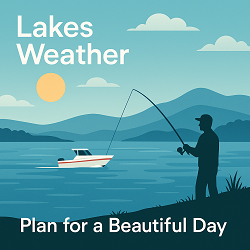Neavitt, MD Weather Forecast and Current Conditions (21652)
Current Conditions From Nearby Local Station

Feels Like 54°F
at
Current Conditions From Nearby Local Station

Feels Like 54°F
at
Point Forecast at a Glance







7-Day Temperature Trend
Week Ahead Summary
High temperatures remain relatively stable through the week, ranging from 57°F to 64°F. Unsettled weather expected with rain likely on at least 4 days.
Climate Context
This week's forecast shows temperatures running 4°F below the historical average for October-November. Normal highs for this period are around 63°F with lows around 44°F.
This Date in Weather History
1988 - Arctic cold invaded the north central U.S. Valentine, NE, dipped to 8 degrees, and Cutbank, MT, reported a morning low of one degree above zero. The temperature at Estes Park CO dipped to 15 degrees, but then soared thirty degrees in less than thirty minutes.
More on this and other weather history
Neavitt 7 Day Weather Forecast Details
Tuesday Oct 28

Day: A slight chance of rain showers after 5pm. Cloudy, with a high near 57. Northeast wind 15 to 20 mph. Chance of precipitation is 20%.

Night: A chance of rain showers. Mostly cloudy, with a low around 51. Northeast wind around 15 mph, with gusts as high as 30 mph. Chance of precipitation is 30%. New rainfall amounts less than a tenth of an inch possible.
Wednesday Oct 29

Day: Rain showers likely. Mostly cloudy, with a high near 58. Northeast wind around 15 mph, with gusts as high as 30 mph. Chance of precipitation is 60%. New rainfall amounts less than a tenth of an inch possible.

Night: Rain showers before 11pm, then showers and thunderstorms. Cloudy, with a low around 57. East wind 15 to 20 mph. Chance of precipitation is 90%. New rainfall amounts between a half and three quarters of an inch possible.
Thursday Oct 30

Day: Showers and thunderstorms. Mostly cloudy, with a high near 64. Southeast wind 15 to 20 mph. Chance of precipitation is 90%. New rainfall amounts between three quarters and one inch possible.

Night: Showers and thunderstorms likely before 2am. Partly cloudy, with a low around 54. Chance of precipitation is 60%. New rainfall amounts between a tenth and quarter of an inch possible.
Friday Oct 31

Day: Mostly sunny, with a high near 60.

Night: Mostly clear, with a low around 52.
Saturday Nov 1

Day: Sunny, with a high near 60.

Night: Partly cloudy, with a low around 50.
Sunday Nov 2

Day: Mostly sunny, with a high near 57.

Night: A chance of rain showers after 7pm. Mostly cloudy, with a low around 49. Chance of precipitation is 30%.
Monday Nov 3

Day: A chance of rain showers. Partly sunny, with a high near 57. Chance of precipitation is 40%.

Night: A chance of rain showers. Mostly cloudy, with a low around 50.
Sun & Moon Monthly
Sunrise 7:29 AM
Sunset 6:11 PM
Last Light 6:38 PM
Moonset 10:18 PM

Close Tide Stations
Tilghman Island, Ferry Cove, Eastern Bay
(2.7 miles away)
Avalon, Dogwood Harbor
(2.9 miles away)
Deep Neck Point, Broad Creek
(3.1 miles away)
Contiguous United States Extremes
Mon's High Temperature
100 at Rio Grande Village, TX and 7 Miles East-southeast Of Hidalgo, TX
Tue's Low Temperature
-8 at Peter Sinks, UT
Weather Folklore
If salt is sticky and gains in weight, it will rain before too late.
Current subscribers - login to your ClearSky account
About Neavitt, Maryland
Neavitt is an unincorporated community in Talbot County, Maryland, United States. It is located on a peninsula at the southern terminus of Maryland Route 579 on the north bank of the Choptank River, southwest of St. Michaels and northeast of Tilghman Island.
Originating on land granted to Quaker colonists in the 17th century, Neavitt emerged as a small agricultural and fishing community during the mid-19th century. Following the establishment of several community institutions and services by the 1880s, many by the local Neavitt family that gave the community its name, Neavitt attracted commercial activities that had arisen throughout the Eastern Shore in the late 19th and early 20th centuries, most notably oystering and canning. Its proximity to the Baltimore, Chesapeake and Atlantic Railway (BC&A) and its steamboat network brought further investment, infrastructure, and tourism from metropolitan areas such as Washington, Baltimore, and Philadelphia.
Following the closure of BC&A rail service in 1931 and the decline of its industries after World War II, Neavitt became the focus of greater tourism and settlement by retirees from around the region, particularly after the opening of the Chesapeake Bay Bridge in 1952. Several large farms were subdivided in the 1950s and 1960s in anticipation of further development, which occurred throughout the rest of the 20th century. Today, Neavitt remains a small village that continues to attract retirees, vacationers, and local watermen that engage in crabbing, oystering, and fishing.
Content from Wikipedia, licensed under CC BY-SA 3.0.
How We Provide Better Local Weather
Current conditions: We use the nearest available station to your location - including professional MESONET/MADIS and local weather stations - often miles closer than regional airports.
Forecasts: National Weather Service point forecasts predict for your specific area, not broad regional zones, making them far more relevant to your location.

